
We stopped for a quick view of Pt. Fermin in nearby San Pedro
| 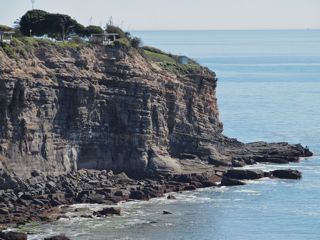
Pt. Fermin
| 
Public beach north of Pt. Fermin
|

Public beach north of Pt. Fermin
| 
Pt. Fermin
| 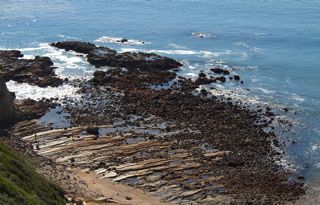
This is north side of Portuguese Pt., Abalone Cove park. We visited there on February 3.
|
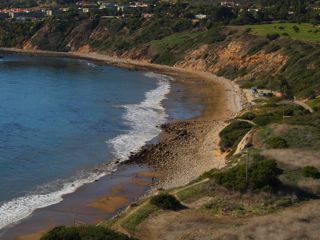
Abalone Cove
| 
Abalone Cove
| 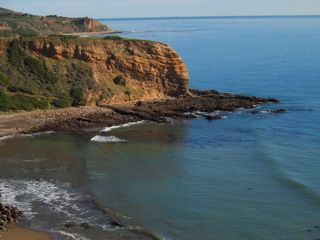
View of Inspiration Pt. from above south side of Portuguese Pt.
|
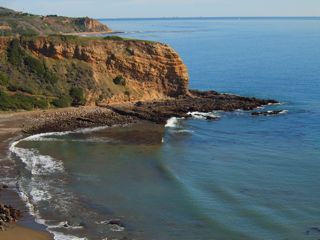
Inspiration Pt.
| 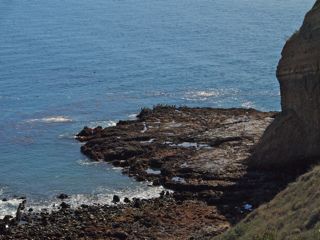
South side of Portuguese Pt., on Smugglers Cove
| 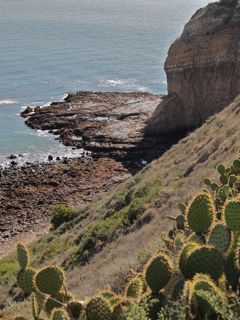
-
|
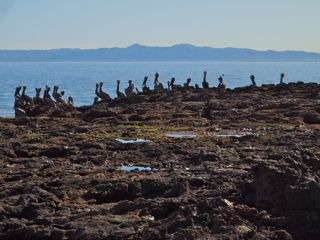
brown pelicans
| 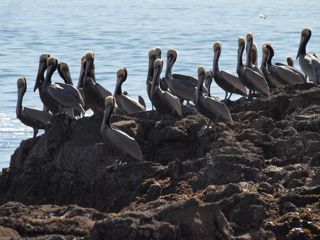
-
| 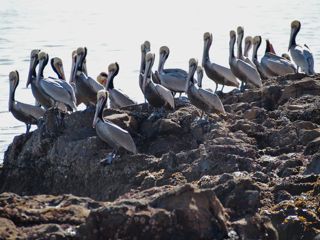
-
|

-
| 
-
| 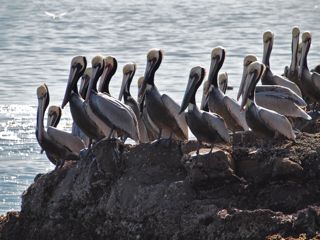
-
|
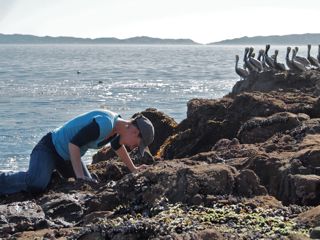
Kari has formerly worked surveying black abalone populations in Sonoma Co., north of San Francisco, so she knew where to look for them.
| 
Two Cyanoplax hartwegii and one Nuttallina fluxa
| 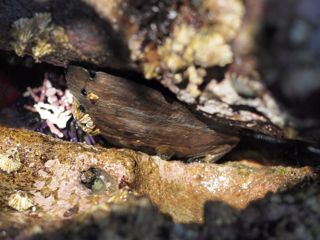
This was tentatively identified as a black abalone (Haliotis cracherodii), so it is potentially a noteworthy record for the southern California mainland coast.
It is listed as a Federally endangered species throughout its range, and is thought to have
gone locally extinct at most southern California mainland localities south of Pt. Conception. The co-occurring green abalone (H. fulgens - see here) has greenish epipodial tentacles and slightly raised holes. This abalone was observed by Kari to have black epipodial tentacles, and seems to have holes flush with the shell. Both the tentacle color and flush holes are consistent with it being a black abalone. For this image, we reflected sunlight on the abalone with a mirror, so it normally would not have sun shining on it.
|
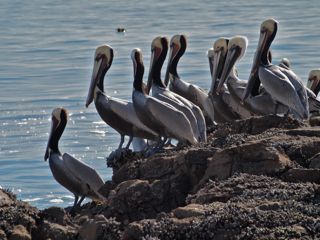
-
| 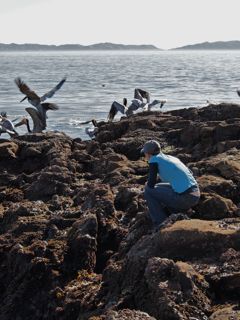
-
| 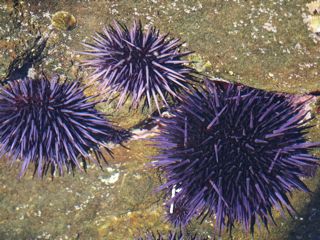
-
|

A reversed chama (Pseudochama exogyra, like other members of the mostly tropical Chamidae, is attached by one valve that is deeply convex, and the upper valve is nearly flat. Members of this genus are attached by their right valve, so the spiral line from the beak is clockwise. The co-occurring Chama arcana, which is more common in bay habitats, attaches its left valve and spirals counter-clockwise.
| 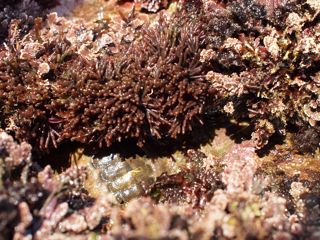
-
| 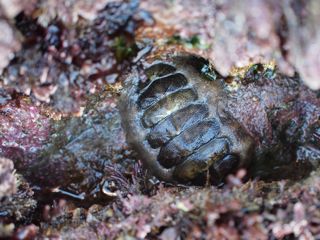
Hinds' chiton (Mopalia hindsii is more normally found north of Pt. Conception. Kari found two of them.
|

-
| 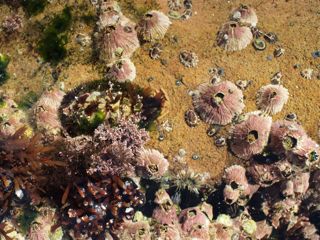
mossy chiton, Mopalia muscosa
| 
-
|
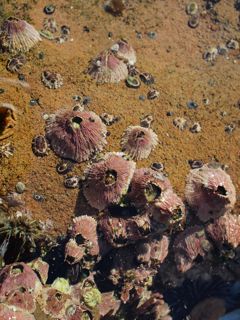
red thatched barnacle, Tetraclita rubescens
| 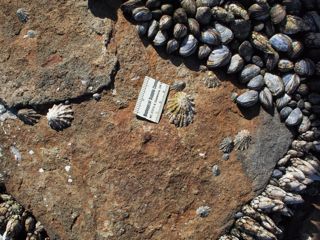
This is an extremely large rough limpet (Lottia scabra), about 3 cm length. This limpet forms a home depression when the substrate is soft enough, or else conforms its shell growth to the topography of the substrate. There is experimental evidence for considering this an adaptation to shorebird predation, and helps explain why this limpet is generally able to live on horizontal rocky surfaces.
| 
-
|
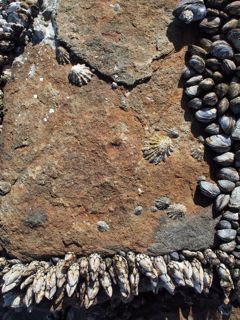
-
| 
The gooseneck barnacle (Pollicipes polymerus) is a passive suspension feeder; it depends on surge to deliver food items. It feeds on surprisingly large prey, which it chews up with its paired jaws.
| 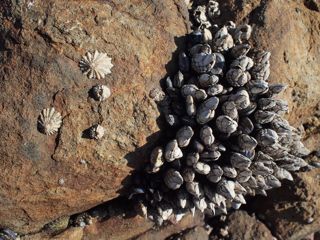
-
|
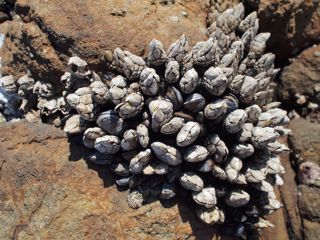
The southern finger limpet (Lottia austrodigitalis) has a white ecomorph that is cryptic on gooseneck barnacles. Several are apparent (but well camouflaged) in this image.
| 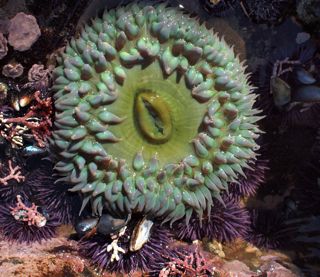
-
| 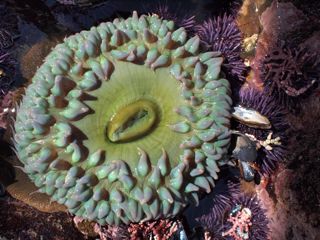
The giant green anemone (Anthopleura xanthogrammica) is common north of Pt. Conception but is rare in the intertidal of southern California. At this locality, it is relatively common in tidepools or in the lowest intertidal.
|

-
| 
-
| 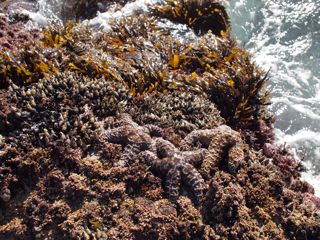
-
|
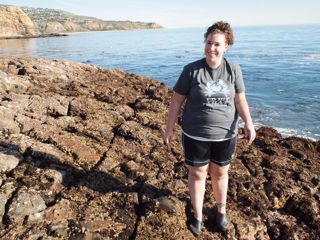
-
| 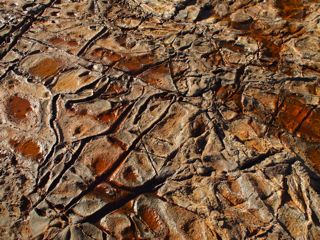
-
| 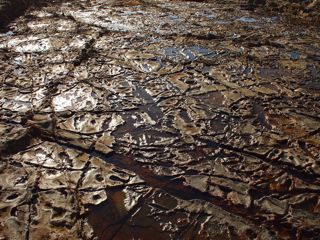
-
|
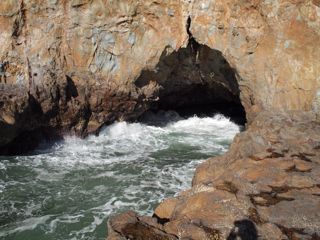
-
| 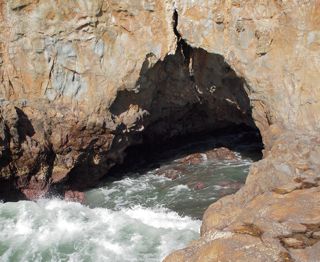
-
| 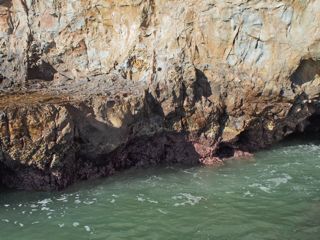
-
|

-
| 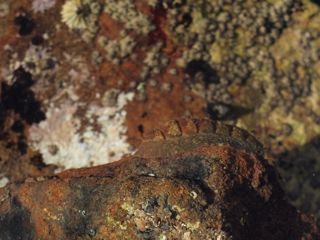
A highly cryptic example of the chiton, Lepidozona pectinulata, was on the underside of a rock.
| 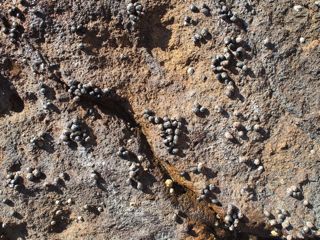
The littorine, Littorina keenae was abundant in the high and splash zones.
|
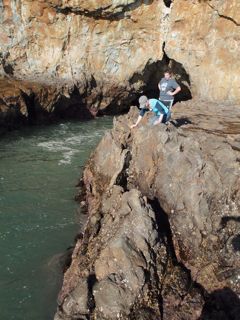
-
| 
-
| 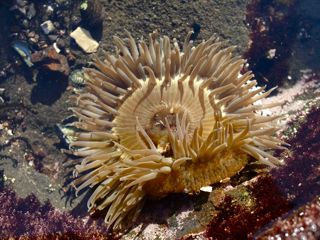
the sunburst anemone, Anthopleura sola
|

southern spiny chiton, Nuttallina fluxa
| 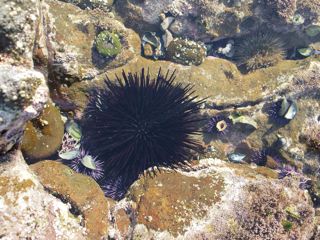
red urchin, Strongylocentrotus franciscanus
| 
-
|
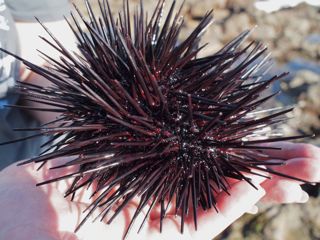
-
| 
-
| 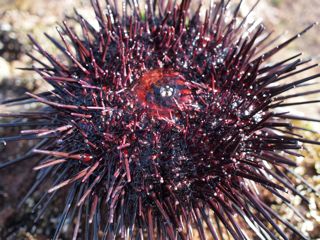
-
|
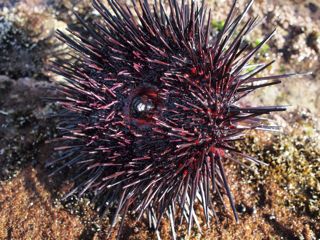
-
| 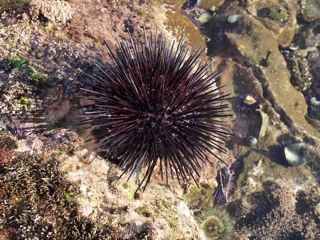
-
| 
-
|
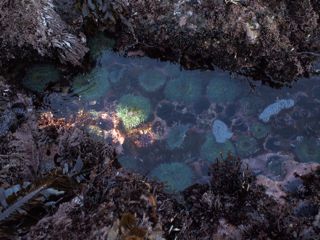
-
| 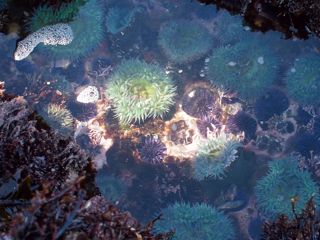
Anthopleura xanthogrammica
| 
The aggregating anemone, Anthopleura elegantissima,
divides asexually to form clonal aggregations, but like other Anthopleura spp. also reproduces sexually by free spawning.
|
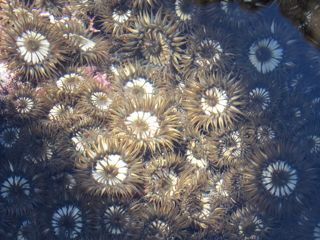
-
| 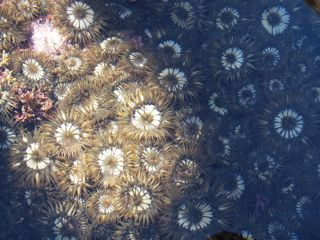
-
| 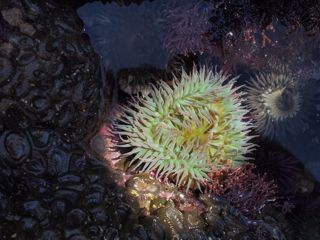
Anthopleura xanthogrammica
|
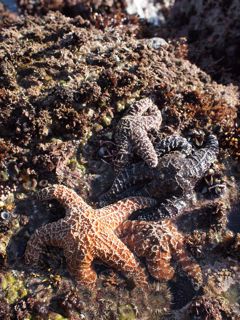
The ochre seastar (Pisaster ochraceus) is very common at this locality.
| 
purple urchins (Strongylocentrotus purpuratus in tidepool
| 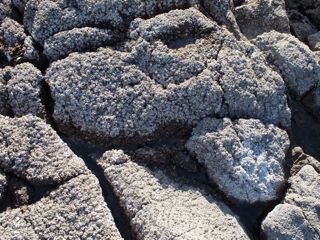
Only this one patch of rocks had abundant large acorn barnacles (Balanus glandula) and it seemed mysterious why this patch was any different from similar habitat nearby. |

Anthopleura elegantissima
| 
-
| 
-
|
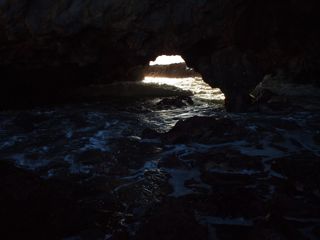
-
| 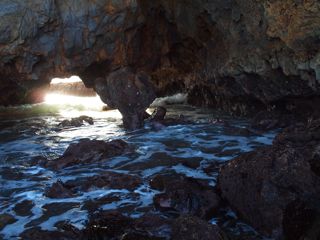
-
| 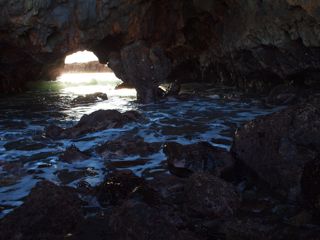
-
|

-
| 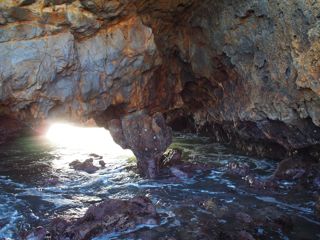
-
| 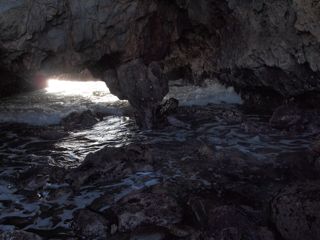
-
|
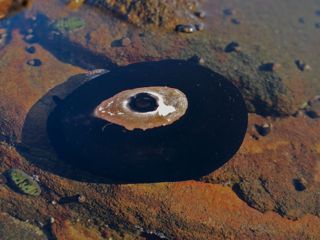
giant keyhole limpet (Megathura crenulata) and Hartweg's chitons (Cyanoplax hartwegii)
| 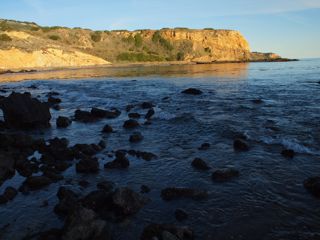
-
| 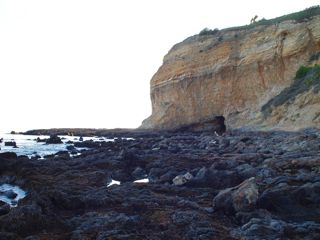
-
|

-
| 
-
| 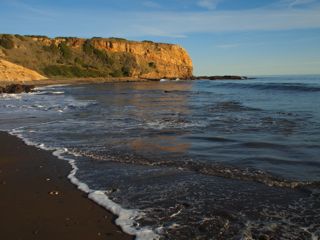
-
|

-
| 
-
| 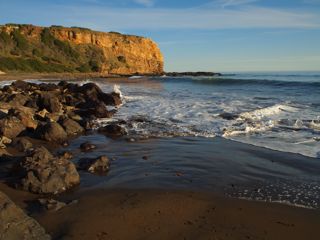
-
|
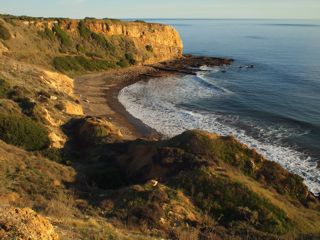
-
| 
-
| 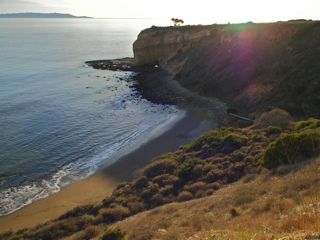
-
|
 Under Construction!
Under Construction! Under Construction!
Under Construction!